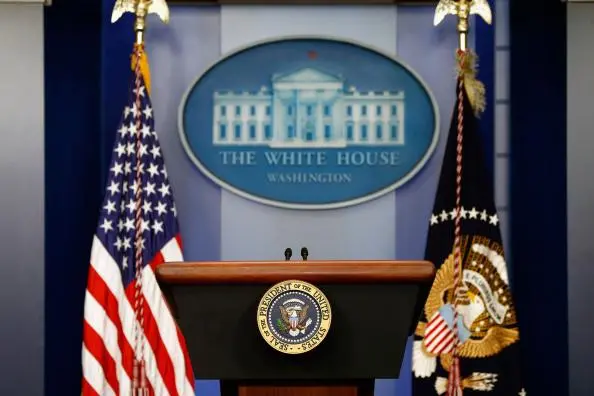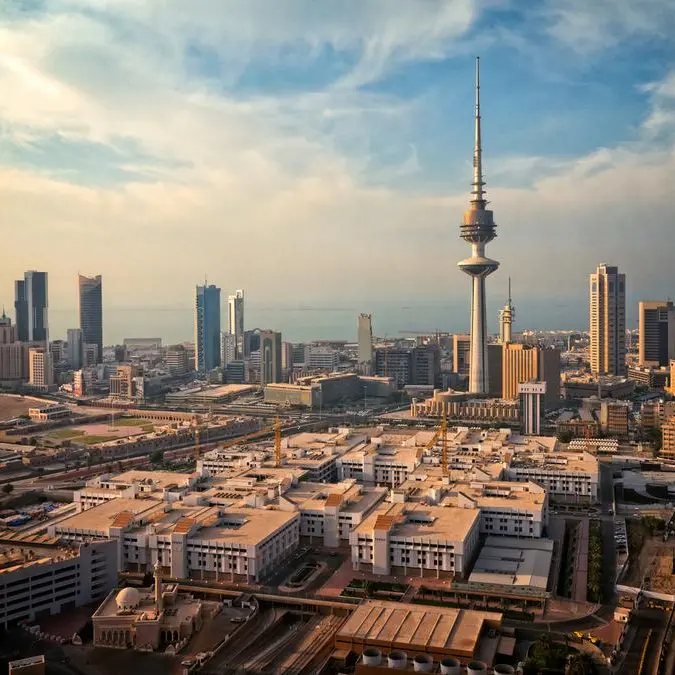PHOTO
The last year in US politics has been both intense and noticeably calmer compared to the Trump administration. President Joe Biden promised a return to more civil, supposedly normal politics. To some extent, he has delivered, avoiding Donald Trump’s intentionally heated rhetoric. However, the country’s divides are too deep for any president to heal in one year, especially when many politicians at either end of the political spectrum seek to exploit division.
Deep political polarization is a key trend that shapes the context in which US politics are playing out. Multiple studies have shown that polarization among Americans today is greater than it has been in decades. This trend predates Trump’s rise to the presidency, but his four years in power significantly widened gaps between Republicans and Democrats, conservatives and liberals, urban and rural residents, and more. These divides deeply influence US politics today.
The pandemic also shapes the context for today’s US politics. COVID-19 has mixed with political polarization, leading to a strong political divide in attitudes toward vaccination, masks and many other public health measures.
Uneven economic recovery — thanks to the pandemic — is another crucial factor shaping politics. In many ways, the US economy is booming. The pandemic badly damaged the US economy in 2020. In 2021, the recovery overall has gone well, despite a hit from the delta variant. If the economy continues to perform well, it might boost support for Democrats next year.
However, the recovery has been uneven, with varying impacts on sectors, demographic groups and regions. Supply chain disruptions continue to negatively affect businesses and consumers. Some sectors are struggling with labor shortages. A lack of affordable childcare and ongoing uncertainty over the pandemic have weakened women’s ability to return to the workforce. Inflation is a major concern for many Americans and a key political challenge in 2022. If the omicron variant proves problematic, it might also slow the recovery.
Polarization, the pandemic and the economy shaped the environment for US politics in the last year and presented the biggest challenges and opportunities for the Biden administration. The year began with political drama on a historic scale. Trump refused to accept that Biden won the presidential election in November 2020 and tried to block the transition of power. Those efforts peaked on Jan. 6, when a large, pro-Trump mob invaded the US Capitol building. The unprecedented event highlighted and deepened the political divides in the country. It also led to the second impeachment of Trump by the House of Representatives and a congressional investigation that will continue into 2022.
The attack on the Capitol did not prevent Biden’s inauguration on Jan. 20. The democratic transition of power went ahead and Democrats also held slight majorities in the House and Senate. They moved ahead quickly, without Republican support, to pass the $1.9 trillion American Rescue Plan in March, building on previous stimulus measures in 2020 to aid the US economy through the pandemic. Biden and the Democrats have also pursued ambitious measures to reshape the social safety net and address badly needed investment in infrastructure. They succeeded in the latter goal, passing a $1 trillion infrastructure bill, with bipartisan support, in November.
Despite important accomplishments on stimulus and infrastructure, Democrats are struggling to pass the Build Back Better bill, which has highlighted internal divisions in the party. Last month, the House passed the bill, which would include measures such as funding for preschool education, subsidies to assist with childcare, efforts to reduce prescription drug prices and funds to address climate change. However, with no Republican support, the bill cannot pass the Senate unless all Democratic senators vote for it and it meets stringent requirements for the Senate’s reconciliation process. At least two senators are holding up the bill based on several objections and it is unclear when or if the bill will pass.
Meanwhile, Trump has consolidated his control of the Republican Party. While some high-profile Republicans criticized him in the immediate aftermath of the Jan. 6 attack, most have walked back any criticism, retired from politics or been ostracized. In many ways, the party has rallied around Trump and pushed out the moderates who express concerns about him. Glenn Youngkin won the election for Virginia governor in November by balancing enough support for Trump to gain pro-Trump voters while presenting himself to the general public as a moderate to win over independents. Other Republicans in politically competitive states are likely to try that same strategy, but it is a challenging line to walk.
The country remains deeply divided on how to respond to the pandemic. The Biden administration’s rollout of vaccines was successful in quickly vaccinating many people who wanted the jabs, but vaccine hesitancy among Republicans has been a major obstacle. The pandemic’s ongoing impact on daily life and the economy significantly contributed to Biden’s falling approval numbers and Democratic fortunes in 2022 will depend greatly on the pandemic.
Other political events in the last year were also bound up in Americans’ polarized views. The US experienced more historic seasons of wildfires, hurricanes and other natural disasters, but polls show that Democrats are increasingly concerned about climate change while Republicans are becoming less so. Following the 2020 racial justice protests, the last year saw important related court cases. The varying outcomes are unlikely to fully please either supporters of social justice movements or those who sympathize with the backlash against them. The Biden administration continues to struggle with how to manage migration at the southern border.
The biggest political event in 2022 is likely to be the midterm elections for the entire House and 34 seats in the Senate. Simply based on electoral maps, the odds are in the Republicans’ favor to regain majorities in the House and Senate. However, it is too early to predict who will win. Several factors will play key roles in determining the outcome. Redistricting — the process of redrawing House districts every 10 years following the national census — is underway. Democrats are deeply concerned about Republican efforts in some states to reduce citizens’ ability to easily access voting. Voters’ perceptions of the president, the economy and the pandemic will be very important and could easily change by November’s midterms.
Other salient issues include education and whether voters start to see benefits from the infrastructure bill. It is also critically important to remember that politics is as much about identity as it is about the economy and other practical issues. Trump will not be on the ballot in November, but his presence is likely to loom large over multiple races.
The coming midterms and Republicans’ optimism about their electoral chances are likely to lead to legislative paralysis next year. Democrats will try to push through more legislation, but Republicans will have little incentive to cooperate.
Another major event to watch in 2022 will be the Supreme Court’s ruling on a key abortion case, expected next summer. It is likely that the Supreme Court will overturn previous rulings that guaranteed women a right to abortion in early pregnancy. Abortion is a deeply polarized issue in the US. If the Supreme Court rules as expected, it will be thanks almost entirely to Trump’s appointment of three conservative justices during his presidency. While conservatives would cheer such a decision, it would badly undermine many other Americans’ belief in the court’s neutrality and legitimacy.
Polarization, the pandemic and the economy will continue to shape the political environment in 2022, just as in 2021. Much will depend on how the pandemic evolves. Inflation and ongoing supply chain woes are major factors that will influence the economy. Democrats will be hoping for economic recovery and a winding down of the pandemic in advance of the midterm elections, while Republicans will seek to keep the flames of the culture wars burning bright in the hope of turning out their own base. Either way, the news media will have plenty to cover and American voters will have another decision to make.
• Kerry Boyd Anderson is a writer and political risk consultant with more than 18 years of experience as a professional analyst of international security issues and Middle East political and business risk. Her previous positions include deputy director for advisory with Oxford Analytica. Twitter: @KBAresearch
Copyright: Arab News © 2021 All rights reserved. Provided by SyndiGate Media Inc. (Syndigate.info).




















